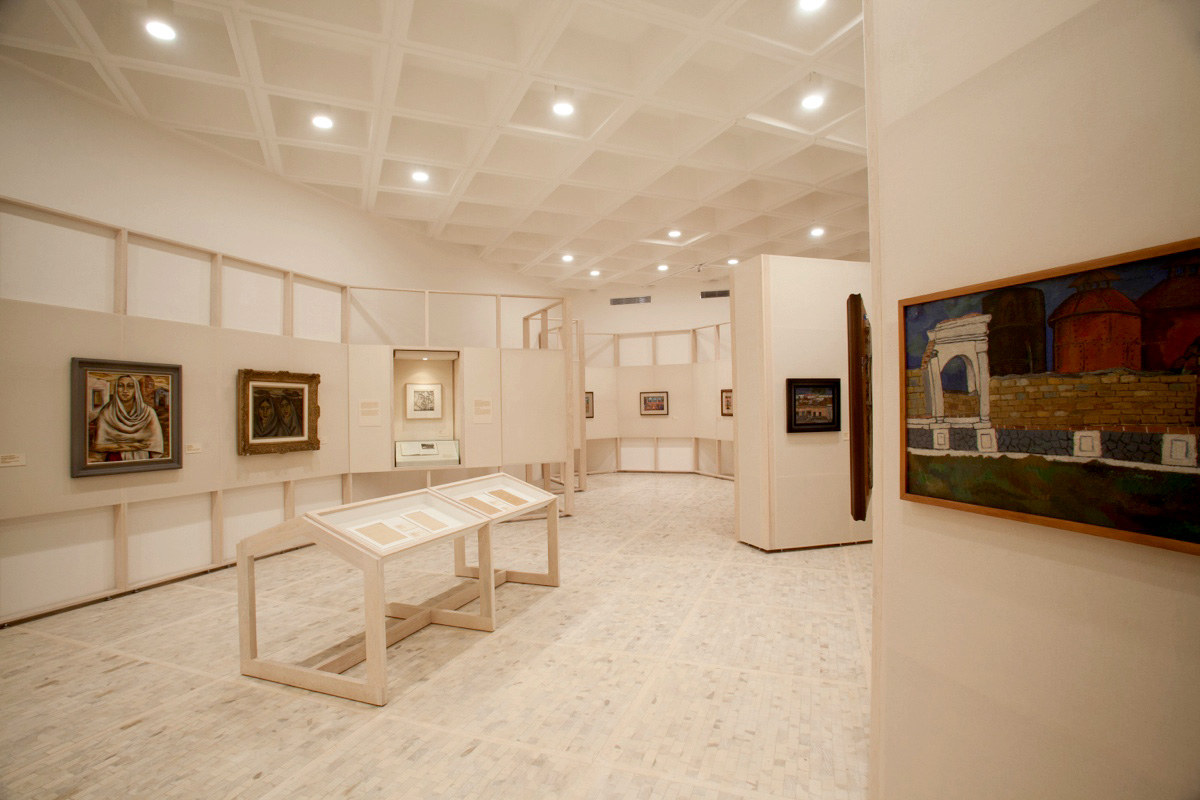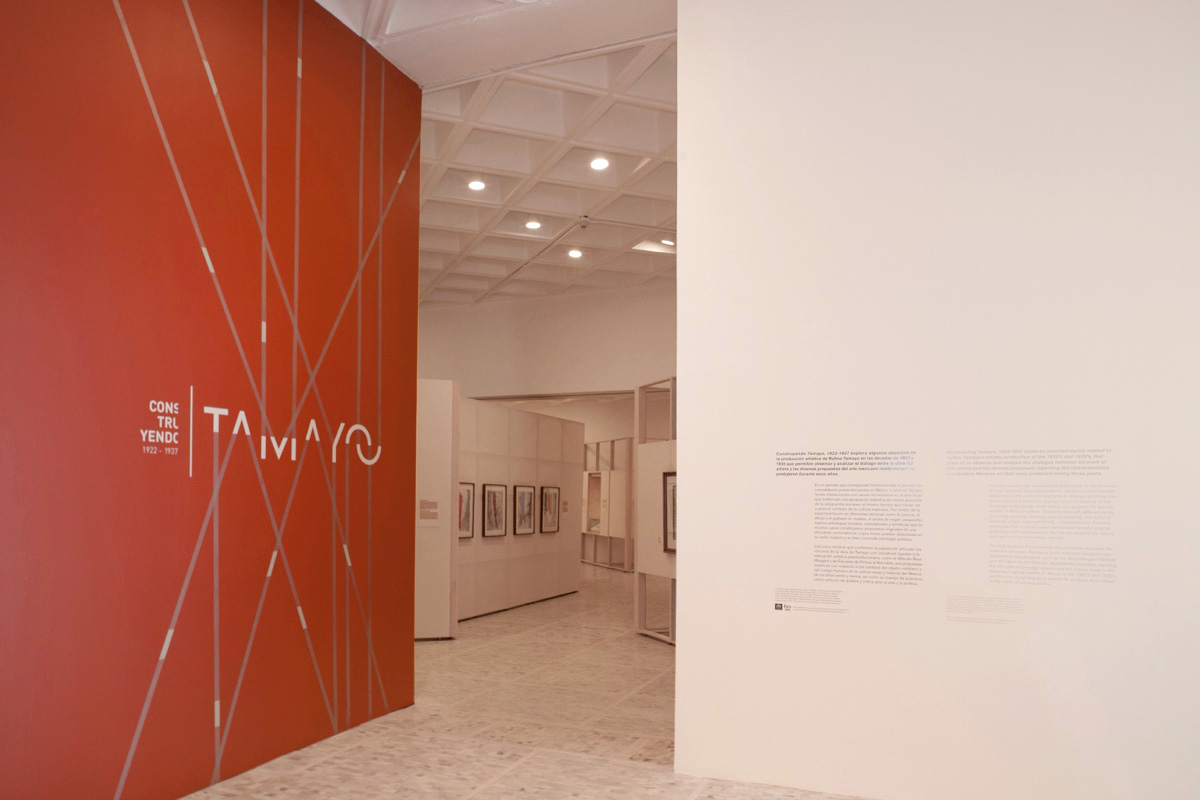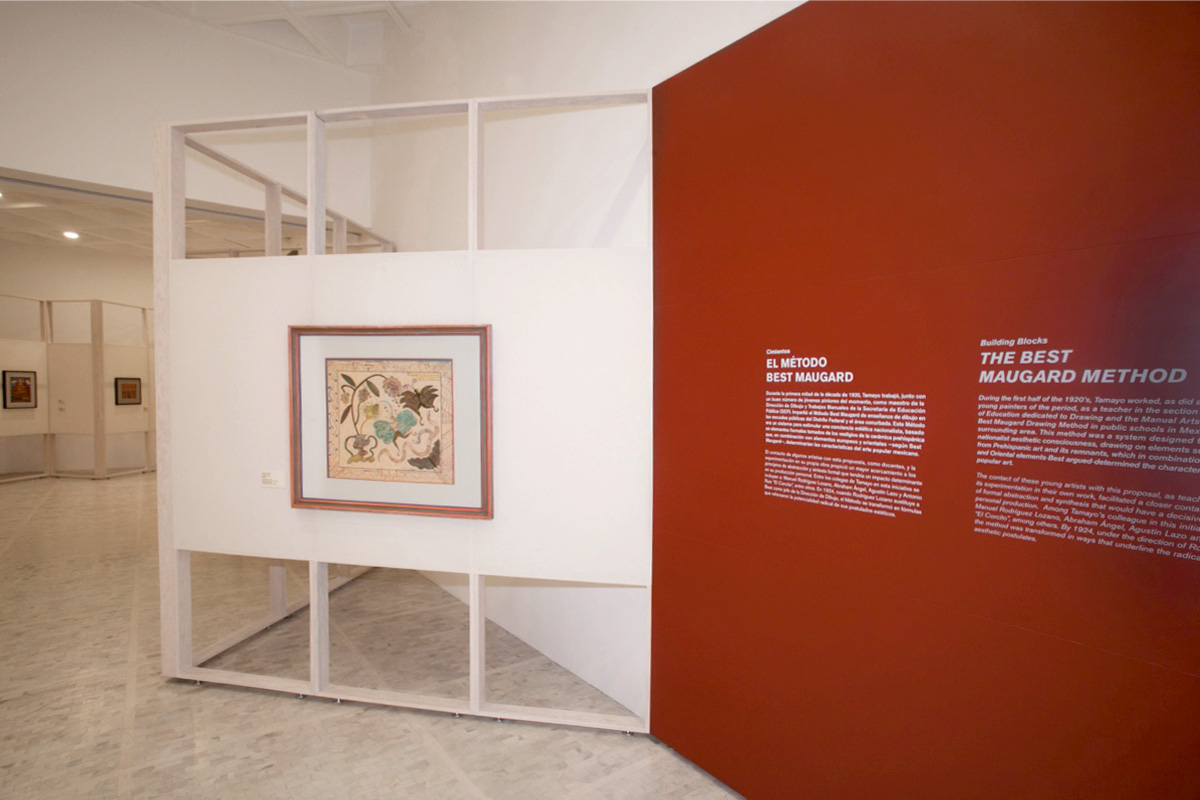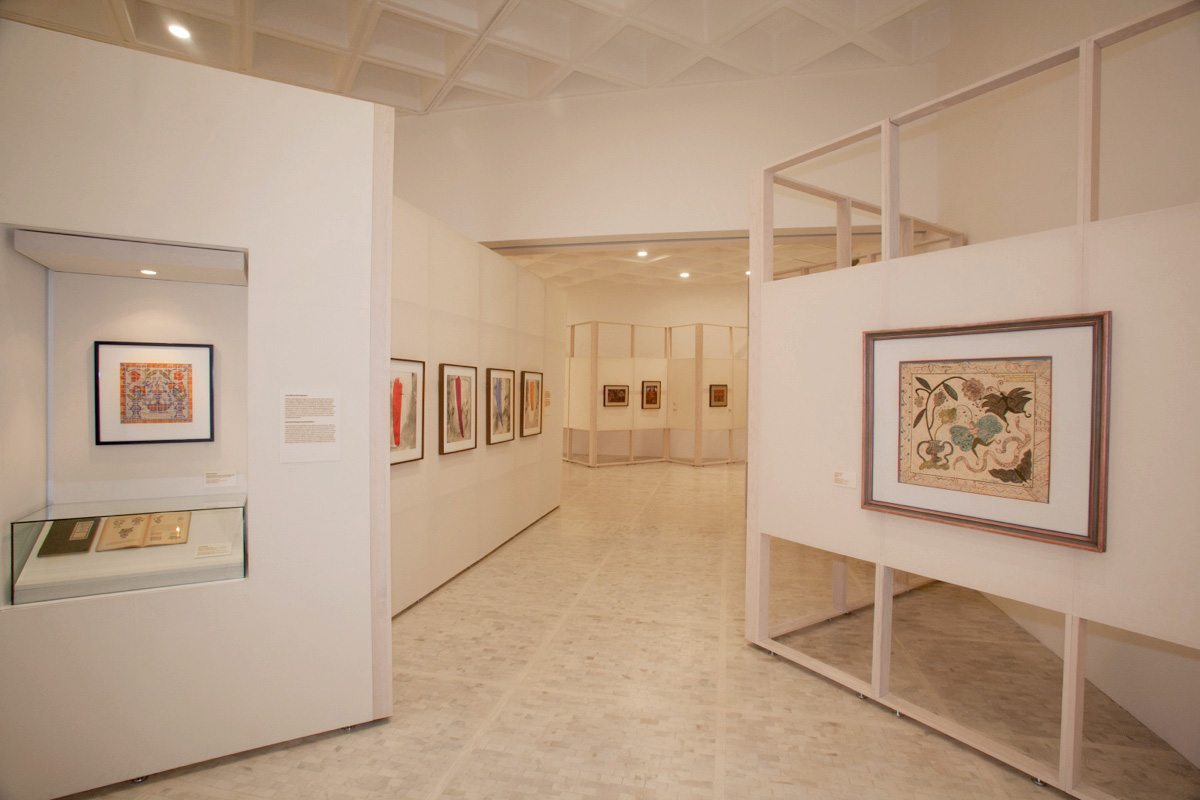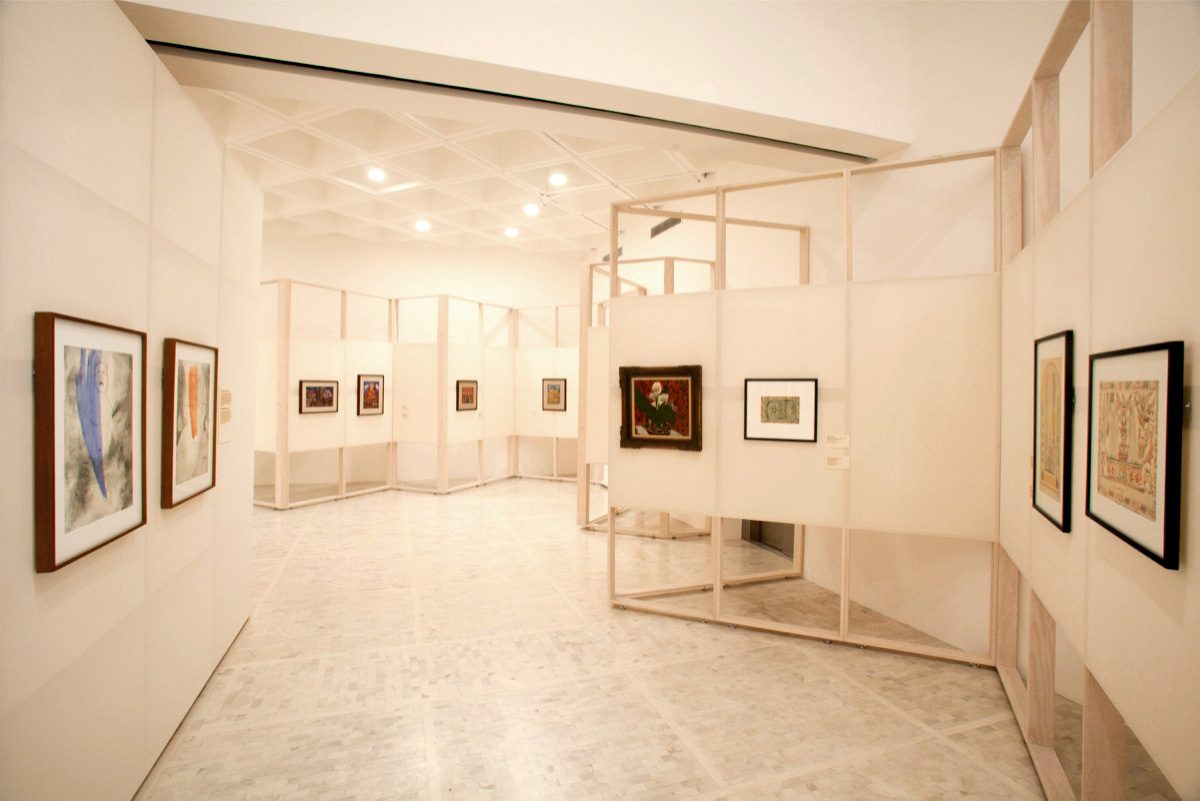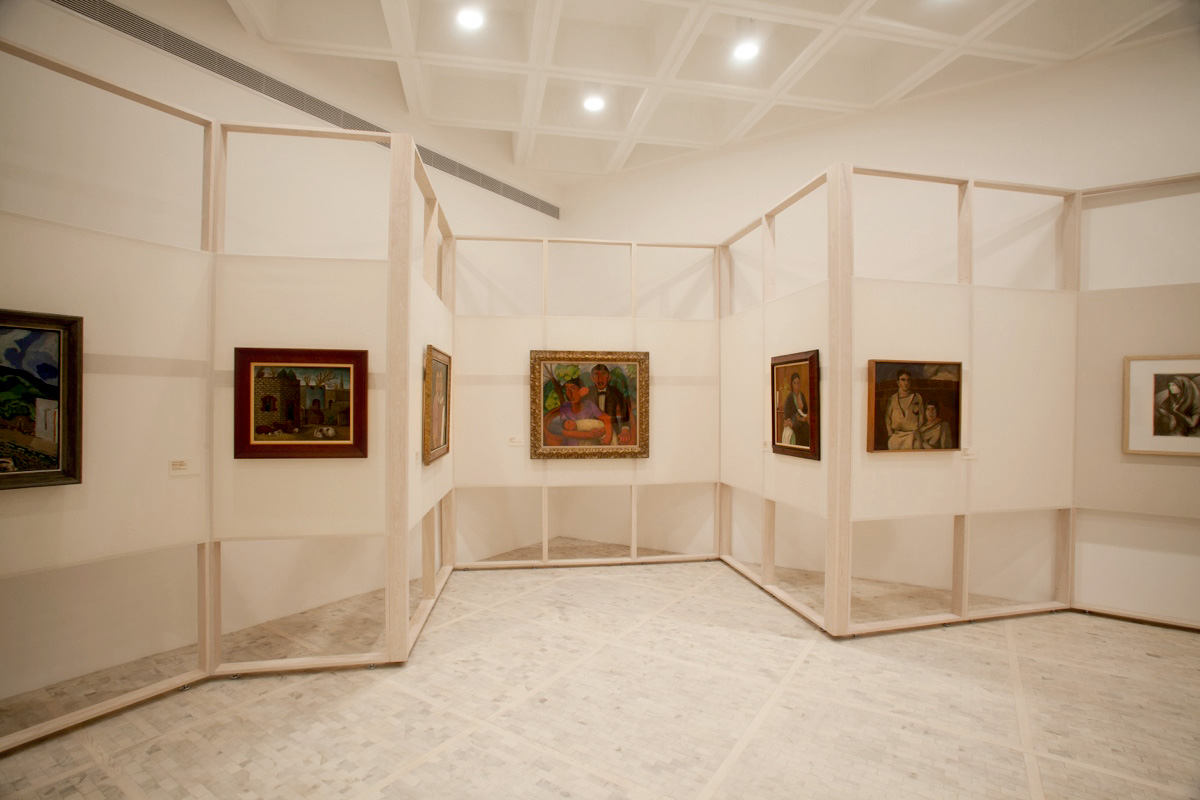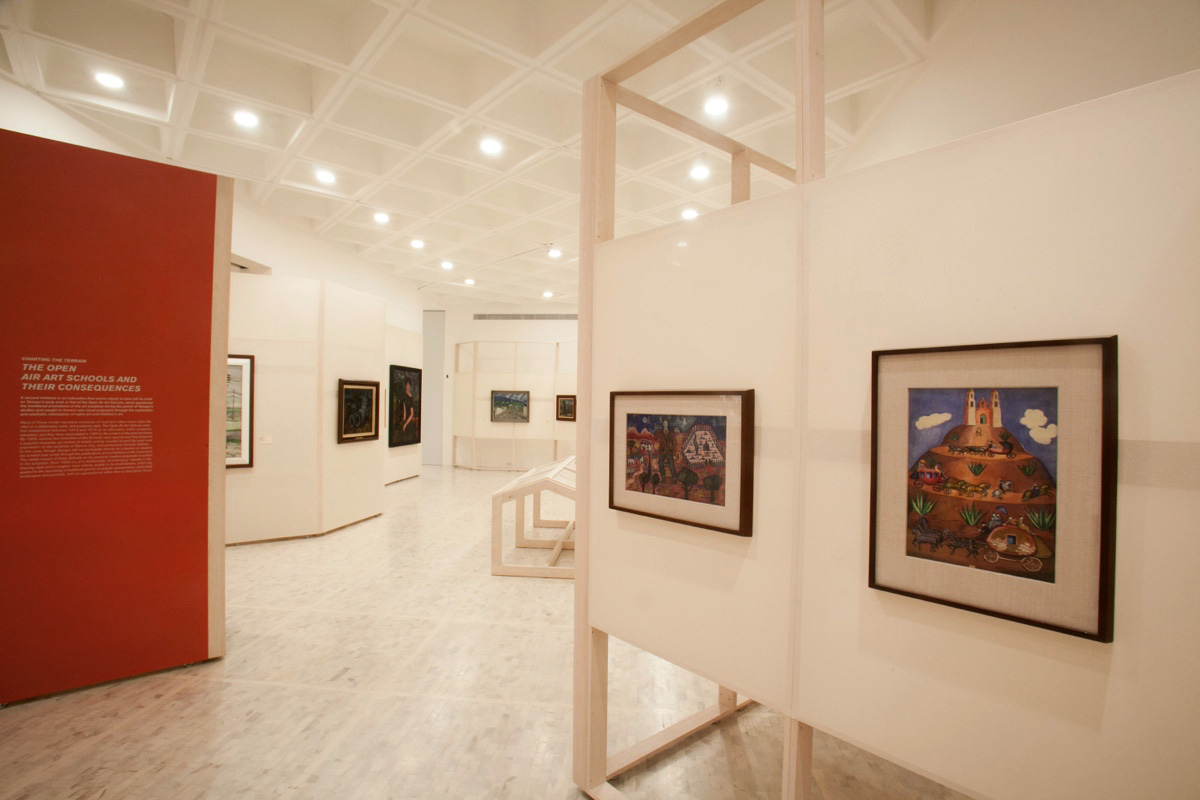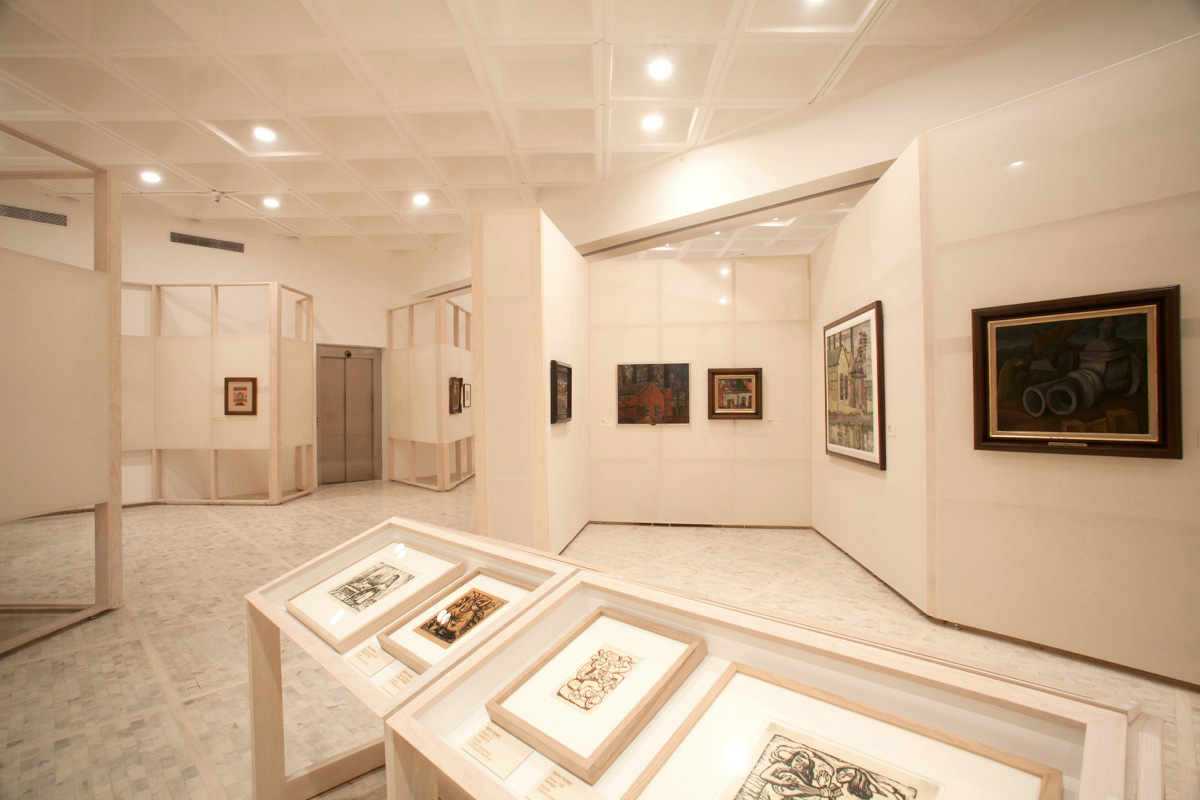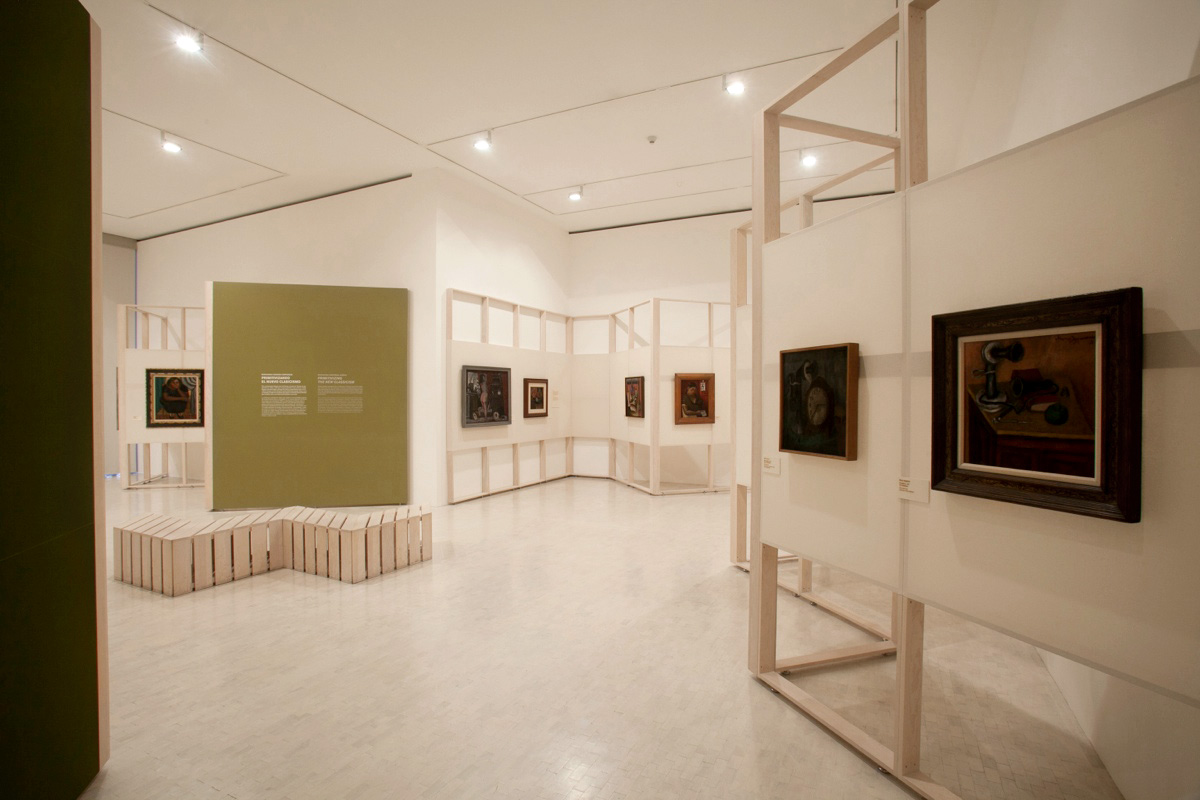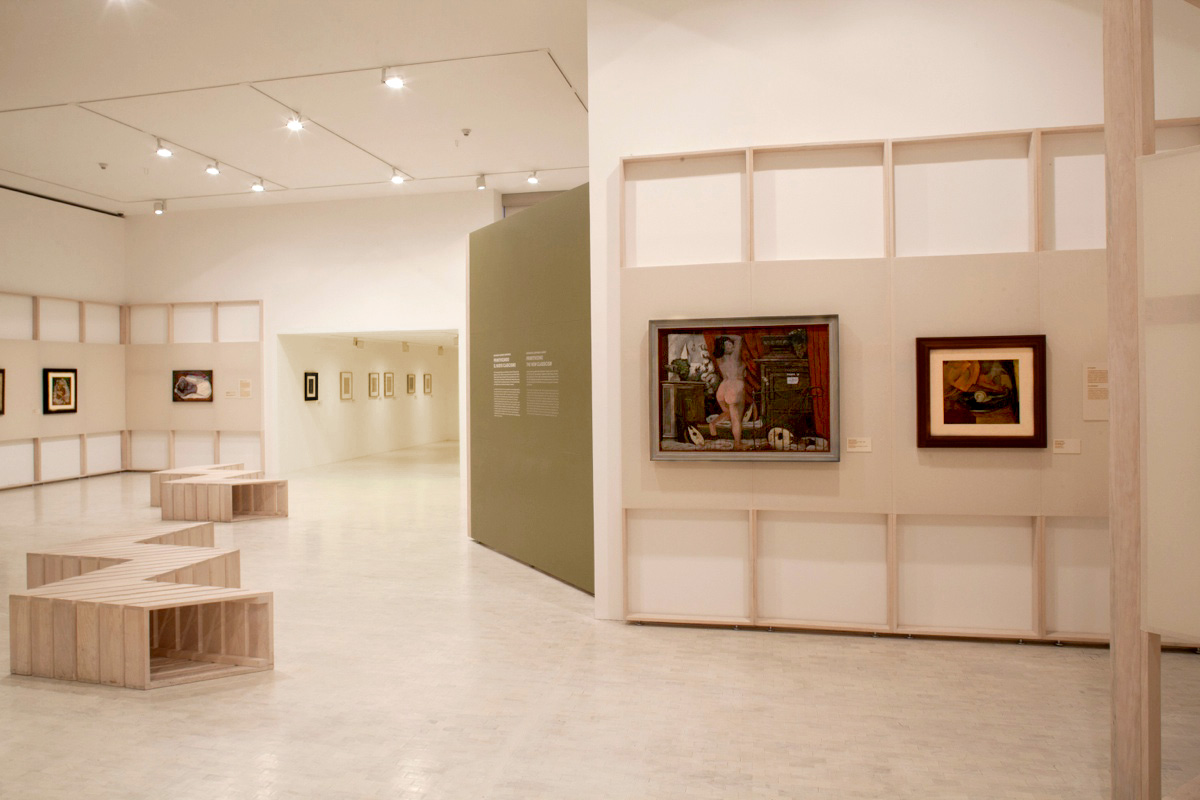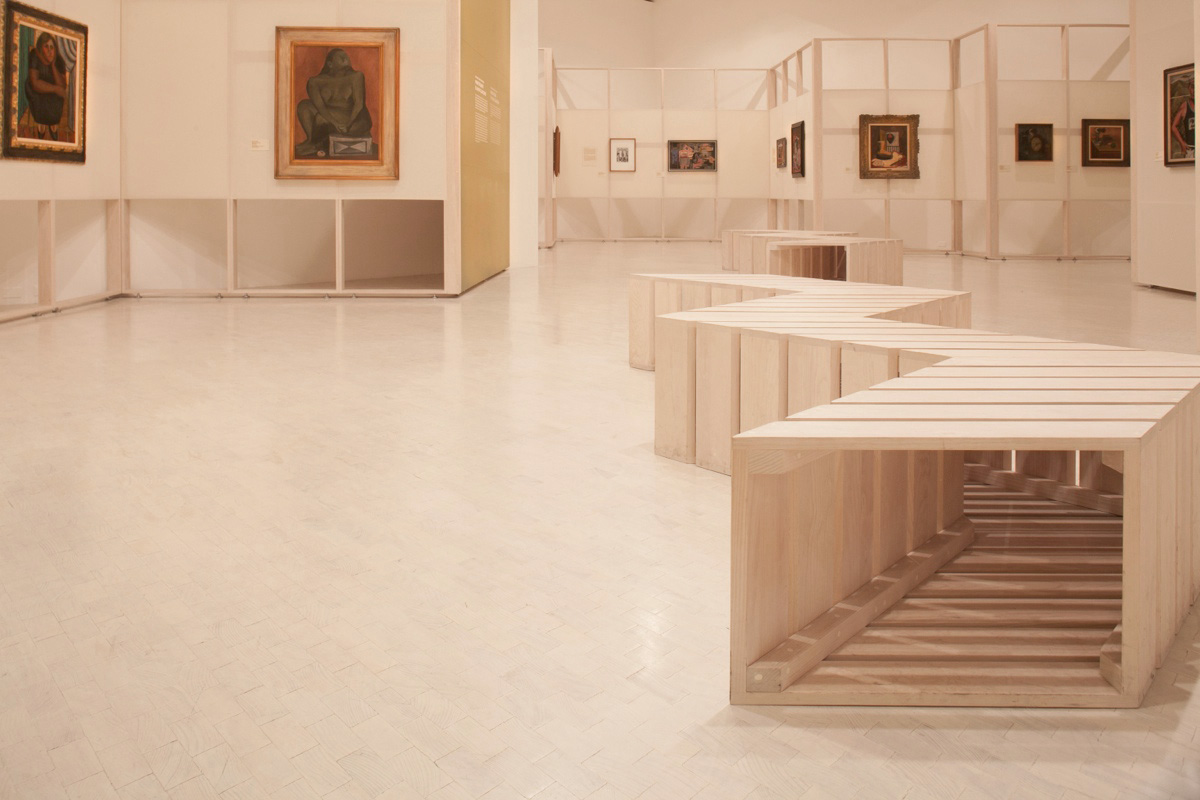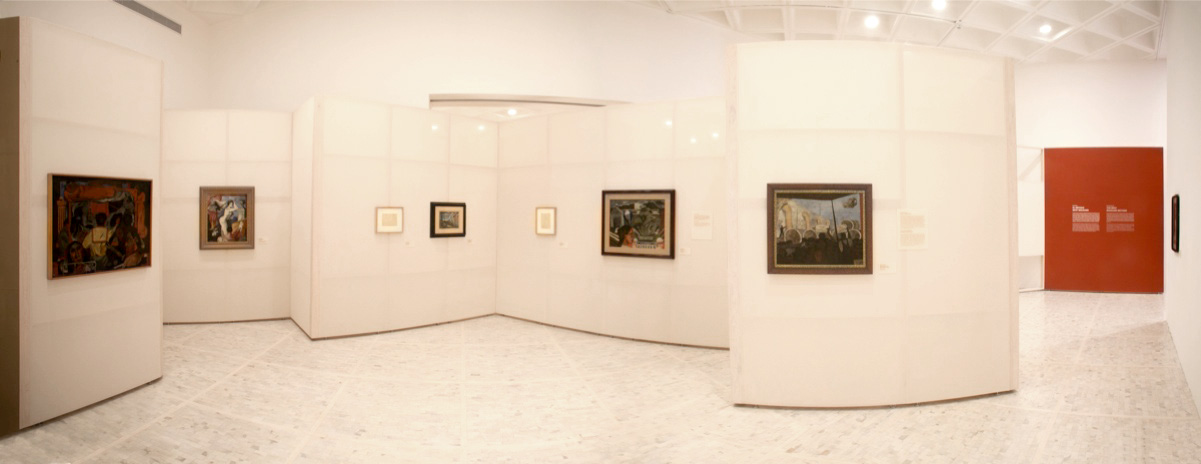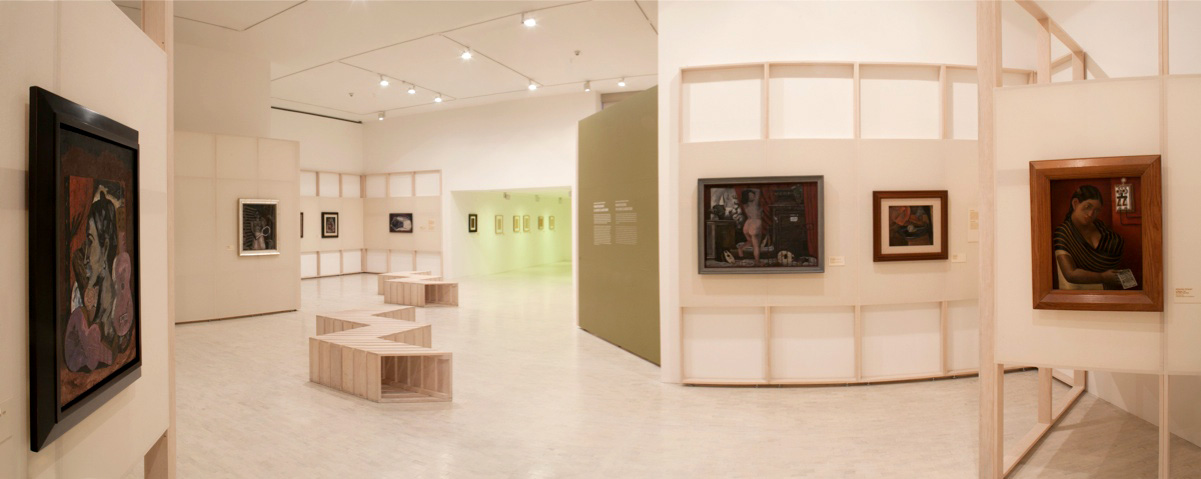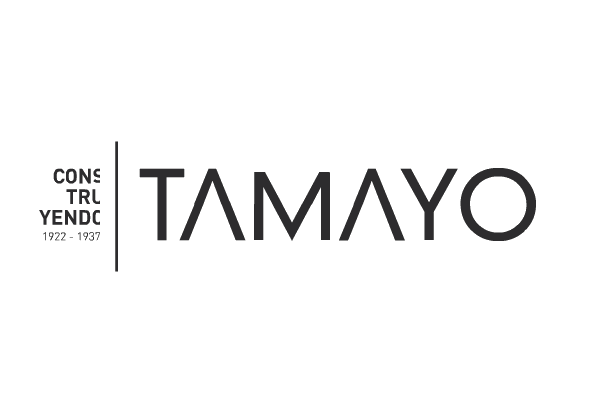Construyendo TamayoConstructing Tamayo
Museo Rufino Tamayo
Ciudad de México
Curaduría: Karen Cordero
Agosto 2013
Museo Rufino Tamayo
Mexico City, Mexico
Curaduría: Karen Cordero
August 2013
La exposición tuvo como objetivo hacer una revisión historiográfica de la obra temprana del artista (1922 – 1937) y sus contemporáneos. La muestra se articuló en cinco núcleos temáticos que mostraron los vínculos de la obra de Tamayo con iniciativas ligadas a la educación artística posrevolucionaria, como el Método Best Maugard y las Escuelas de Pintura al Aire Libre; sus propuestas estéticas con respecto a los cambios del objeto cotidiano y del cuerpo humano en la cultura visual y material de México en ese periodo; así como su manejo de la pintura como análisis y crítica ante el arte y la política.
El diseño museográfico se elaboró a partir de la interpretación de los “siete elementos primarios característicos del arte aborigen” según el método de dibujo implementado por Adolfo Best Maugard. Utilizando este elemento como base, se creó un módulo en zig-zag que, además de aumentar el área de exhibición, dispuso la obra en elementos diagonales para posibilitar el diálogo visual en cuatro formas diferentes: Generar una museografía muy íntima y cálida que daba la sensación de “abrazar” al público visitante. Activar y enfatizar la mirada hacia conjuntos de obras. Disposición de obras en “conversación” para potenciar el discurso curatorial. Establecer una relación directa con la obra, más humana y más activa.
El proyecto fue reconocido con Mención honorífica dentro de los premios INAH Miguel Covarrubias de Museografía por el trabajo de diseño e instalación de exposición 2014.
The aim of this exhibition was to present a historiographical review of the artist’s early work (1922 – 1937) and his contemporaries. It was presented in 5 themed areas, which showed Tamayo’s art work related to artistic education after the Mexican Revolution like the Best Maugard Method and the Schools of Outdoor Painting; as well as the aesthetic applications regarding the daily object and the human body in the visual and material culture of Mexico in this period; and his application of painting as analysis and critique for arts and politics.
The exhibition design was elaborated with the interpretation of the “seven basic characteristic elements of the native art” according to the drawing method implemented by Adolfo Best Maugard. Using this element as a foundation, we created zigzag modules to organize the artwork diagonally to enable the dialogue of the pieces in four different ways: Create a warm and intimate atmosphere that seems to “hug” the visitors. Emphasize and activate the gaze to groups of paintings. Organize the artwork in “conversations” to strengthen the curatorial discourse. Establish a direct relationship with the artwork, more human, more active.
The Project was awarded the Miguel Covarrubias National Prize by the Instituto Nacional de Antropología e Historia for the best exhibition design in 2014.
